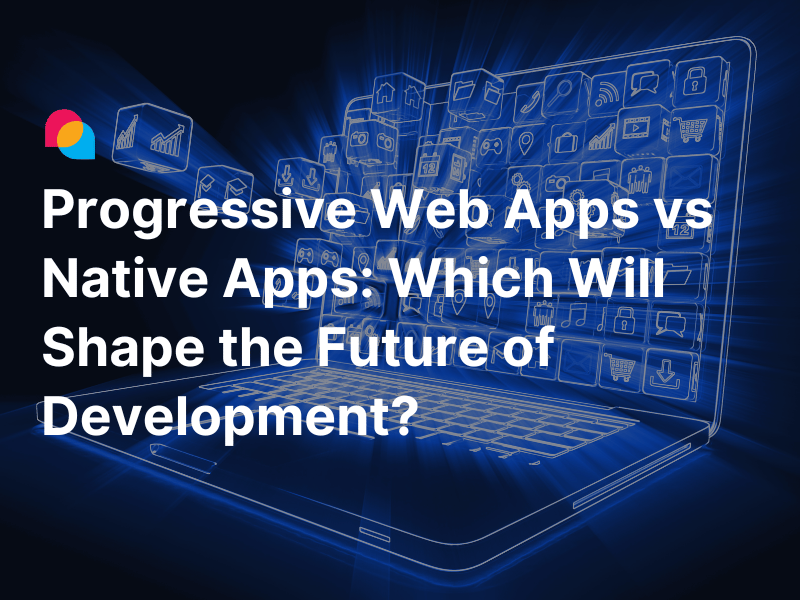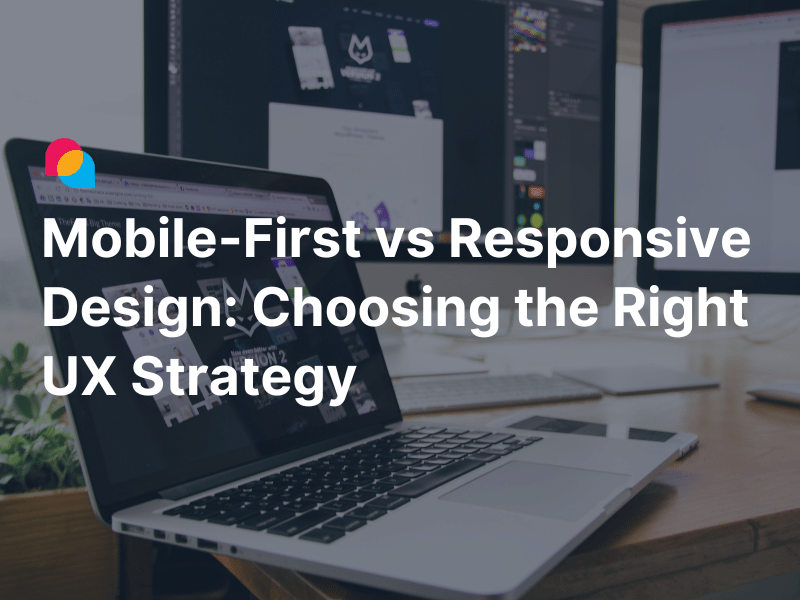In the rapidly evolving digital landscape, the role of User Interface (UI) and User Experience (UX) design has never been more critical. Innovations in UI/UX are revolutionizing the way we interact with technology, bridging the gap between functionality and aesthetics. This comprehensive exploration delves into the importance of UI/UX in modern software development, the evolution of design principles, and the groundbreaking advancements shaping the future.
The Importance of UI/UX in Modern Software Development
In today's competitive market, the success of software products heavily relies on the quality of their UI/UX. A well-designed user interface not only enhances usability but also fosters a positive user experience, leading to higher user satisfaction and retention. Companies that prioritize UI/UX in their development process often see significant improvements in user engagement and overall product performance.
Understanding the Basics of UI/UX
What is UI/UX?
UI (User Interface) refers to the visual elements through which users interact with a software application, including buttons, icons, and layout. UX (User Experience), on the other hand, encompasses the overall feel of the interaction, focusing on the user's journey through the product and ensuring it is intuitive and satisfying. While UI is about the look and functionality, UX is about the ease and enjoyment of use.
The Role of UI in Enhancing Functionality
A well-designed UI is crucial for enhancing functionality. It ensures that users can navigate the software effortlessly, perform tasks efficiently, and access features without confusion. For example, clear visual hierarchies, intuitive navigation, and accessible controls all contribute to a functional UI that improves user efficiency and satisfaction.
The Impact of UX on Aesthetic Appeal
The aesthetic appeal of a product is significantly influenced by its UX. A positive user experience often translates to a visually pleasing interface. Elements such as color schemes, typography, and layout play a pivotal role in creating an engaging and attractive design. Studies have shown that users are more likely to continue using a product that provides both visual and functional satisfaction.
Modern UI/UX Design Principles
User-Centered Design Approach
At the heart of modern UI/UX design is the user-centered approach. This principle emphasizes designing with the end-user in mind, ensuring that their needs, preferences, and limitations are considered throughout the development process. This approach leads to products that are not only functional but also intuitive and enjoyable to use.
Responsive Design: Adapting to Different Devices
In an era where users access applications across a multitude of devices, responsive design has become a cornerstone of UI/UX. Responsive design ensures that a product provides a seamless experience regardless of the device or screen size. Techniques such as fluid grids, flexible images, and media queries are employed to create adaptable layouts that enhance usability across various platforms.
Minimalist UI/UX: Less is More
The minimalist design philosophy, "less is more," is increasingly popular in UI/UX. By focusing on simplicity and eliminating unnecessary elements, designers can create clean, efficient interfaces that enhance user experience. Minimalist designs emphasize clarity and functionality, helping users to focus on key tasks without distraction.
Tools and Software for UI/UX Design
Top UI/UX Design Tools in 2024
The landscape of UI/UX design tools is constantly evolving. In 2024, some of the top tools include Figma, Sketch, Adobe XD, and InVision. These tools offer robust features for creating, prototyping, and collaborating on design projects. They enable designers to produce high-fidelity prototypes, streamline workflows, and ensure consistency across design elements.
Prototyping and Wireframing Software
Prototyping and wireframing are essential steps in the UI/UX design process. Tools like Axure, Balsamiq, and Marvel help designers create detailed wireframes and interactive prototypes. These tools facilitate the visualization of design concepts, allowing for early testing and feedback, which is crucial for refining and iterating on designs. Wireframing and prototyping help bridge the gap between conceptual ideas and practical implementation, ensuring that the final product meets user needs and expectations.
Collaboration Tools for UI/UX Teams
Effective collaboration is key to successful UI/UX design. Tools such as Miro, Zeplin, and Asana support seamless teamwork by enabling designers, developers, and stakeholders to communicate and coordinate effectively. Miro offers a digital whiteboard for brainstorming and planning, Zeplin bridges the gap between designers and developers by providing design specifications and assets, and Asana helps teams organize and prioritize their work. These tools provide platforms for sharing designs, tracking progress, and managing project tasks, ensuring that everyone stays aligned and informed.
Technological Advancements in UI/UX
The Role of AI and Machine Learning in UI/UX
Artificial Intelligence (AI) and Machine Learning (ML) are transforming UI/UX by enabling more personalized and adaptive experiences. AI algorithms can analyze user behavior and preferences to deliver customized content and recommendations. For example, Netflix uses AI to suggest movies and shows based on viewing history, enhancing the user experience by making it more relevant and engaging.
Virtual and Augmented Reality Interfaces
Virtual Reality (VR) and Augmented Reality (AR) are creating new possibilities for immersive UI/UX. VR provides fully immersive experiences, ideal for gaming, training, and virtual tours, while AR overlays digital information onto the real world, enhancing applications in fields like education, retail, and healthcare. The success of products like Oculus Rift and Pokémon Go highlights the potential of VR and AR to create engaging and interactive user experiences.
Voice User Interfaces (VUIs)
Voice User Interfaces (VUIs) are becoming increasingly popular with the rise of voice-activated assistants like Amazon Alexa, Google Assistant, and Apple Siri. VUIs allow users to interact with devices using natural language, providing a hands-free and intuitive way to perform tasks. This technology enhances accessibility and convenience, particularly for users with disabilities or in situations where manual interaction is impractical.

Best Practices in Modern UI/UX Design
Accessibility in UI/UX Design
Creating accessible designs is paramount in modern UI/UX. Accessibility ensures that all users, regardless of their abilities, can interact with your product. This includes considerations for visual, auditory, cognitive, and motor impairments. Designers can use tools like WAVE and Axe to evaluate accessibility and make necessary adjustments. For example, using high-contrast colors, providing text alternatives for images, and ensuring keyboard navigability are crucial steps. According to the WebAIM Million Report, over 98% of homepages have detectable WCAG 2 failures, highlighting the need for improved accessibility efforts.
Data-Driven Design Decisions
Incorporating data into design decisions is essential for creating user-centered products. Analytics tools like Google Analytics, Hotjar, and Mixpanel provide insights into user behavior, helping designers understand how users interact with their interfaces. This data can reveal pain points, guide UI/UX adjustments, and validate design choices. For instance, heatmaps from Hotjar can show where users click most frequently, indicating which elements are working well and which may need redesigning.
Microinteractions: Enhancing User Engagement
Microinteractions are small design elements that enhance user engagement and provide feedback. These include animations, hover effects, and subtle visual cues that make the interface feel more responsive and alive. For example, a slight animation when a button is pressed can indicate that the action has been recognized, improving user satisfaction. Studies have shown that well-designed microinteractions can significantly improve user engagement and overall satisfaction by making the interaction more intuitive and enjoyable.
Case Studies of Innovative UI/UX Designs
Leading Tech Companies and Their UI/UX Strategies
Tech giants like Apple, Google, and Microsoft set industry standards with their innovative UI/UX strategies. Apple’s focus on simplicity and elegance is evident in their clean, intuitive interfaces, which prioritize user needs and aesthetic appeal. Google's Material Design language has revolutionized interface design with its emphasis on grid-based layouts, responsive animations, and consistent design across platforms. Microsoft's Fluent Design System integrates light, depth, motion, and scale to create adaptive, engaging user experiences. These companies invest heavily in user research and testing, continuously refining their designs based on user feedback and technological advancements.
Startups Revolutionizing UI/UX
Startups often push the boundaries of UI/UX design with fresh, user-centric approaches. Companies like Airbnb and Slack have redefined user experiences in their respective fields. Airbnb’s interface is known for its clean design and seamless user journey from search to booking, while Slack’s intuitive and visually appealing design has made it a favorite among communication tools. These startups emphasize simplicity, usability, and continuous user feedback to innovate and improve their products.
User Feedback and Iterative Design
User feedback is a critical component of the iterative design process. By collecting and analyzing user input through surveys, usability tests, and direct interactions, designers can identify issues and make informed improvements. Tools like UserTesting and Usabilla facilitate this process by providing platforms for conducting usability tests and gathering user feedback. Iterative design allows for continuous refinement, ensuring that the product evolves to better meet user needs and preferences. For example, iterative testing helped improve the user interface of the popular app, Duolingo, making it more intuitive and user-friendly over time.
Conclusion
The field of UI/UX is constantly evolving, driven by technological advancements and changing user expectations. Designers must stay informed about the latest trends and best practices, continuously learning and adapting to new challenges. The future of UI/UX promises exciting innovations, from AI-driven personalization to immersive VR and AR experiences. By embracing a mindset of continuous improvement and innovation, designers can create interfaces that not only meet current needs but also anticipate and shape future user experiences.
References
The Definition of User Experience (UX) - Nngroup
The future of personalization—and how to get ready for it - Mckinsey





